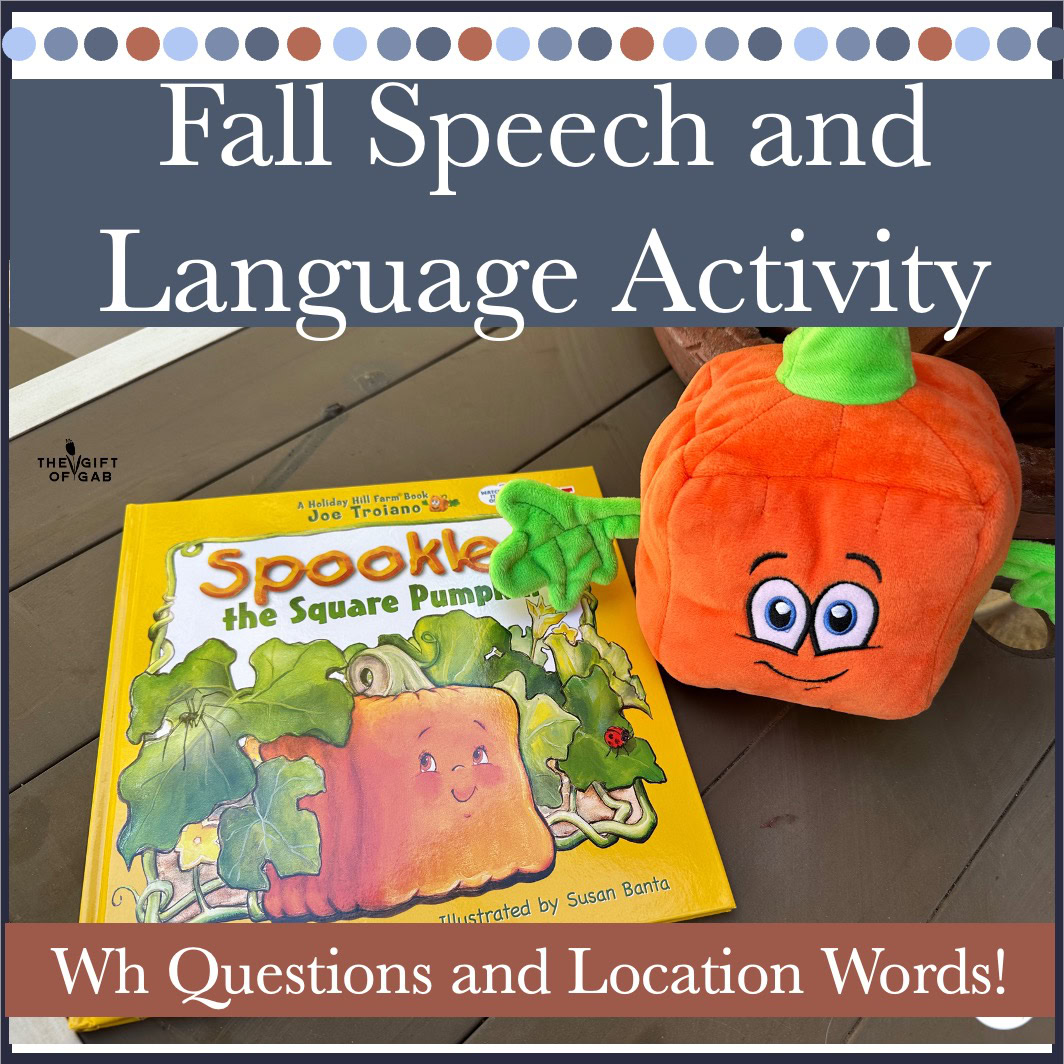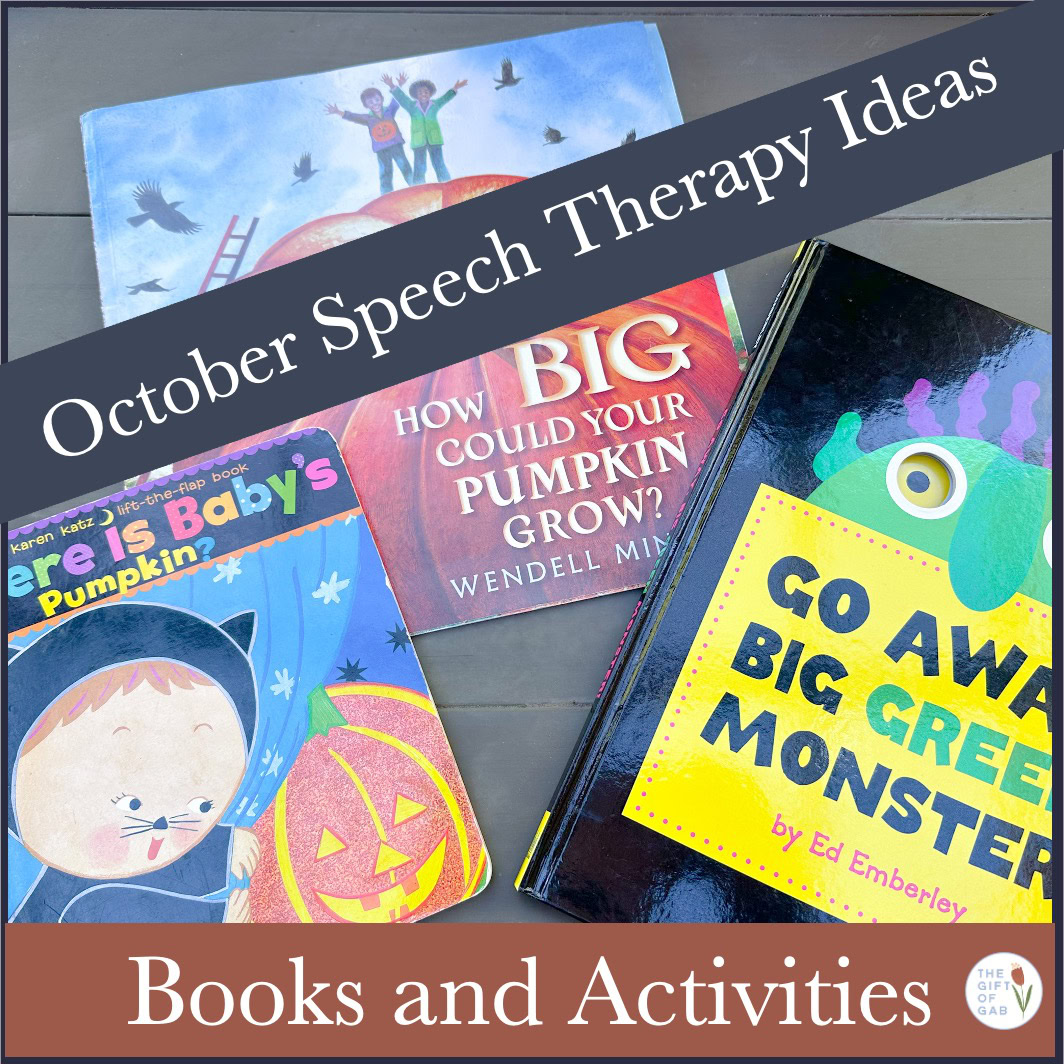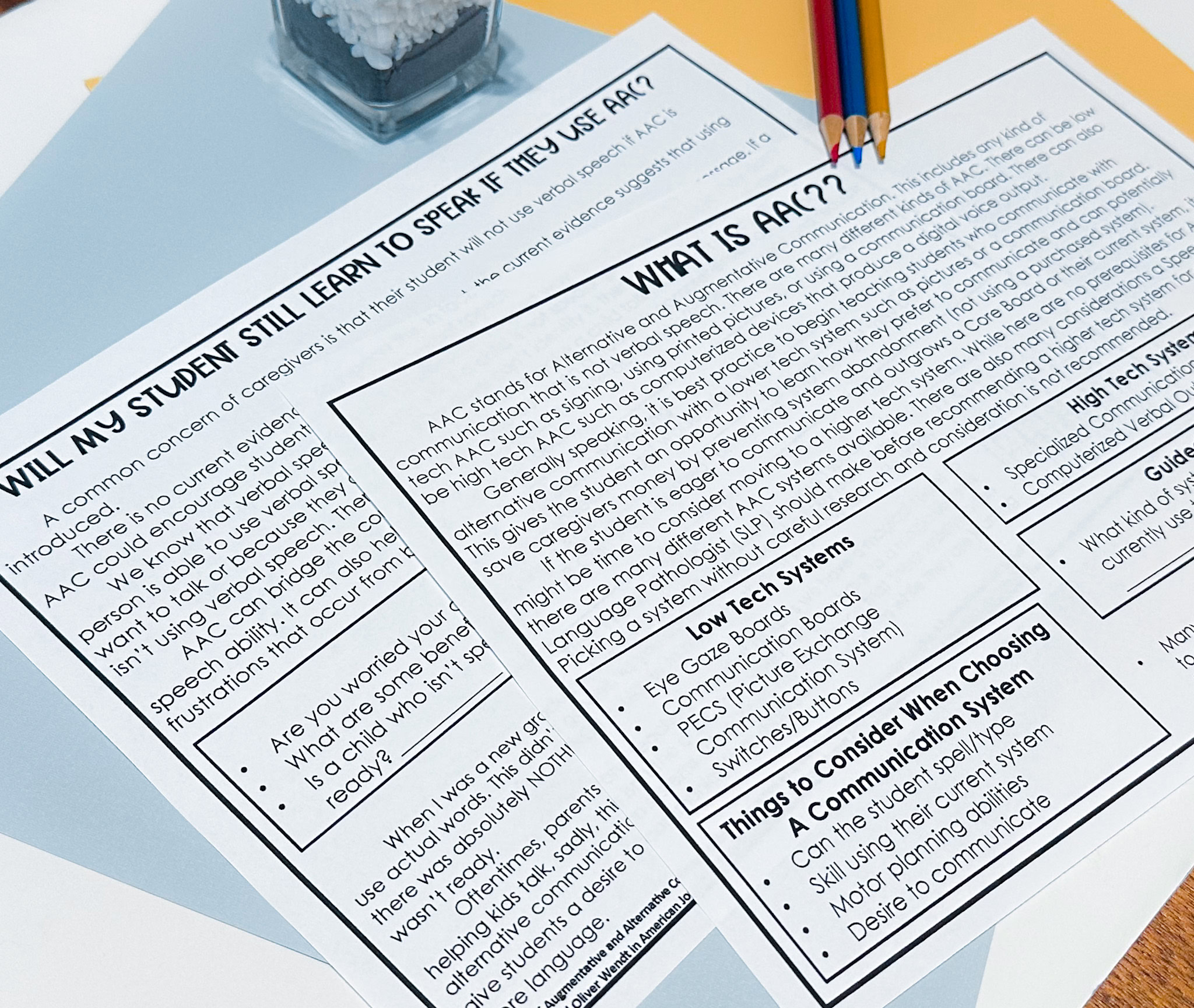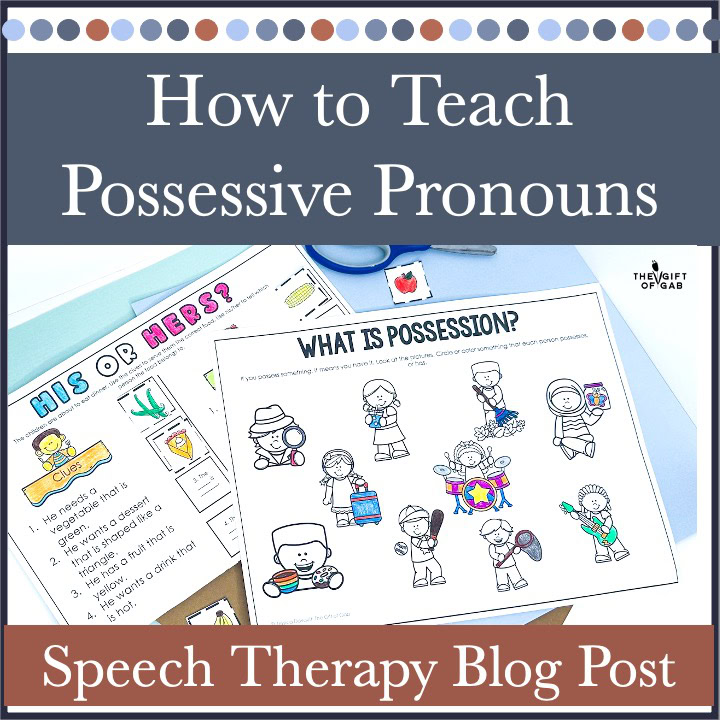Are you a parent looking to learn more about teaching your toddler how to talk? Or are you an SLP looking for early intervention resources to give to caregivers? I’ve got you covered. Here are my favorite strategies for helping toddlers learn new words at home.

Before we dive into the strategies, let’s talk about when to use them. A toddler’s day is broken up into two main categories: routines and play time. Routines are the things we do the same way every day. You have wake up routines, meal time routines, toileting routines, getting dressed routines, bath time routines, and bed time routines. For toddlers and preschoolers, play time is usually any time that is NOT one of these routines.
Play times and routines are the best ways to teach your toddler new words. Let’s break this down a little more.
How to use routines and play times to teach speech and language at home:
- Think About Your Routines. List them out and walk through them in your head. Are you talking to your child as you go through the motions? Do you use long phrases and sentences? Perhaps you are only using 1-2 words? These are important details.
- Think About Your Child’s Abilities: Now, think about your child. How many words does s/he use at a time? None? 1-2? 3-5? It doesn’t matter how many it is. The important thing to remember is that you want to try and use 1-2 more words than your child as you speak to him/her.
- Use Self-Talk. Self-talk is a fancy way of saying “talk about what YOU are doing”. Think about this example. I am pretending I am talking to a child who uses 0-1 word utterances, during a dressing routine. “Green shirt. Put on shirt. Shorts. Put on shorts. Get socks. Put on socks.”
- Use Parallel-Talk. Parallel- talk is the fancy way to say “talk about what YOUR CHILD is doing”. Consider this example. Pretend I am narrating a child’s actions as he plays with a truck. He is currently using 3–4-word utterances. “You are pushing the truck. The truck goes fast. The truck is under the couch.”
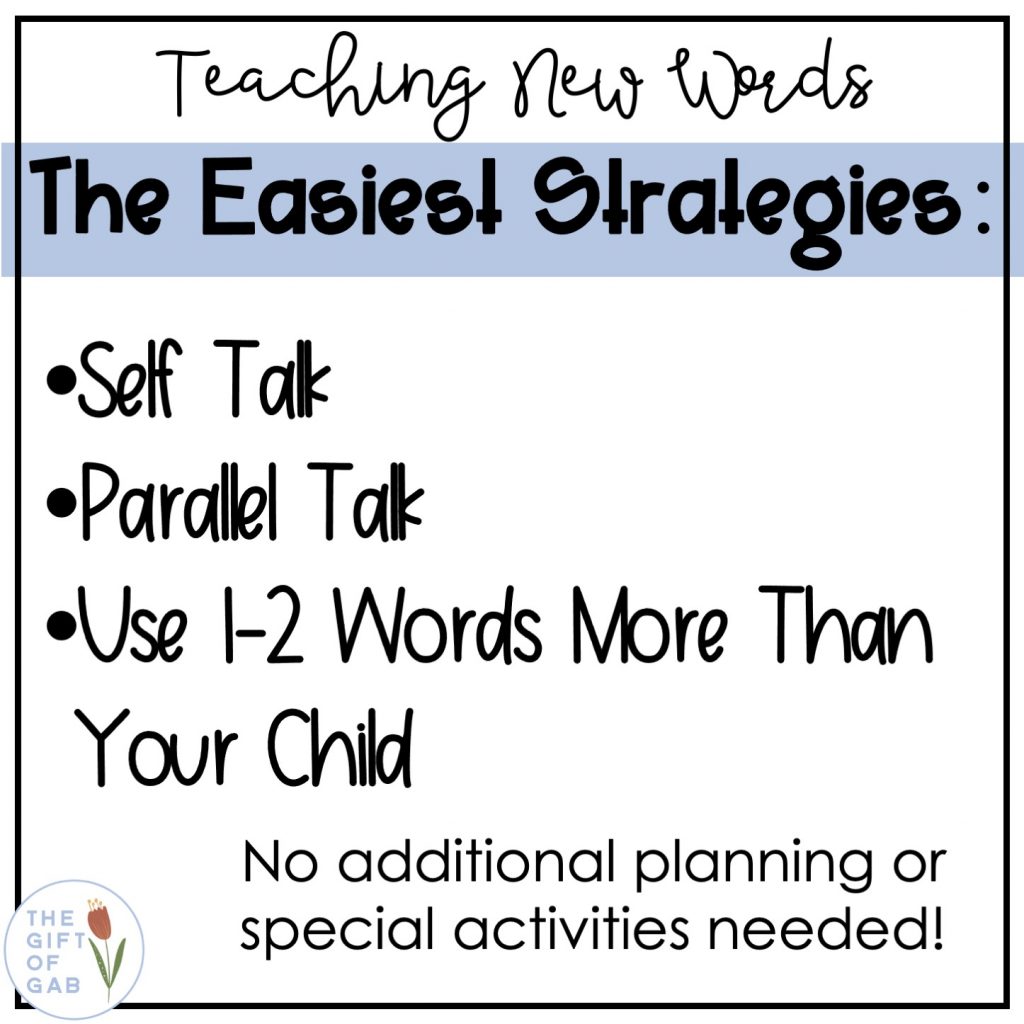
Look back at those examples on numbers 3 and 4. Do you see that I carefully chose how many words I used? I adapted my language to be just slightly more complex than his. For the child using 0-1 words, I chose to use 2–3-word phrases. I chose to use 5–6-word sentences for the child that is using 3–4-word utterances.
Using 1-2 more words than your child does two things. First, it simplifies your language so that your child isn’t overwhelmed by trying to understand too many words that he doesn’t know yet. Second, adding in that additional 1-2 words adds a slight challenge to encourage him to comprehend more. It’s like finding the middle ground between too easy and too hard. When you are choosing which words to use, do your best to choose core words.
I hope this post gives you some new strategies to help you as you are teaching your toddler how to talk.
Unfortunately, I cannot guarantee that if you use these strategies, your toddler will instantly start using more words. As you know, the process of learning new words is complex and requires a lot of time and consistent effort. However, I can guarantee that these are some of the most recommended strategies that SLP’s give parents of toddlers and preschoolers.
If you’re seeking more comprehensive guidance while awaiting professional speech therapy for toddlers, consider utilizing resources like the “Speech Therapy Workbook for Parents of Late Talkers.” This workbook includes 22 strategies complete with activities, songs, and book recommendations tailored to weekly themes, making speech therapy accessible and enjoyable at home.
**Quick Disclaimer: The ideas shared in this post are meant to educate and help caregivers feel more confident implementing speech therapy-type activities at home. They are not intended to be a substitute for speech therapy with a licensed SLP, as each child has unique needs.**

